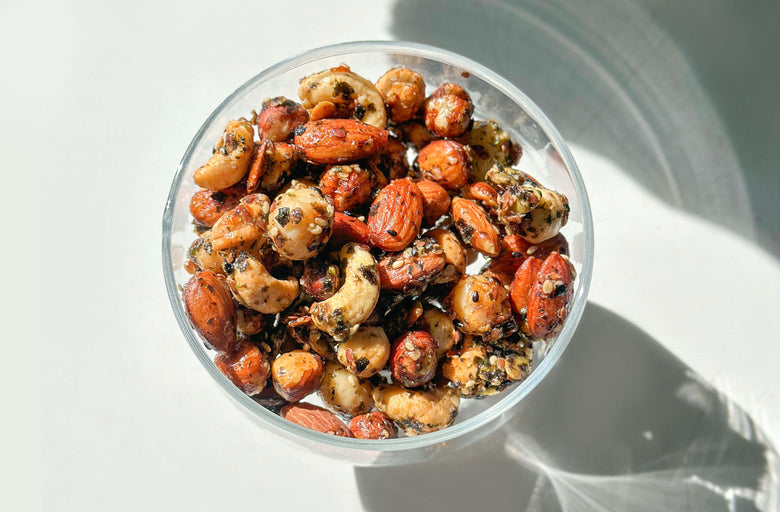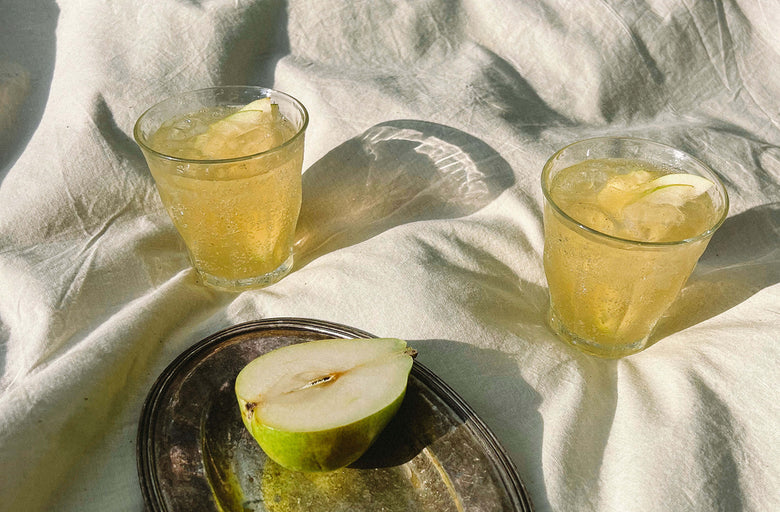Modern science has come a long way in its understanding of the relationship between bacteria and health. Still, it's a complex subject, and an ever-evolving one. The better your grasp of the science of probiotics, the more you'll be able to harness their life-giving, transformational power.
GOOD VS. BAD: BACTERIA
Today, probiotics are everywhere, from the shelves of your big-box drugstore to your face cream to your mid-afternoon snack. But way back in 1907, when Russian microbiologist Elie Metchnikoff first floated the idea of prolonging life by drinking sour milk, his colleagues thought he was crazy.
Like many of us, Metchnikoff was obsessed with aging, believing that “aging is a disease that should be treated like any other.” So, like the scientist he was, he went about trying to treat it.
Metchnikoff believed that the toxins in our bodies which had negative impacts on our health (and therefore, our longevity) came from “bacterial putrefaction in the large intestine.” Perhaps he first got the idea from Hippocrates, who not only stated that “death sits in the bowels,” but further believed that “bad digestion [was] the root of all evil.” Removing the bad bacteria would be like turning back time—but how to do it?
THE ORIGINS OF “PROBIOTICS”
Metchnikoff looked to communities where residents were known to live particularly long lives; specifically, the Hunzas of Kashmir, Georgians in Eastern Europe, and Bulgarians. When he began to evaluate their diets, he noticed a common thread: all of them regularly consumed some type of fermented food. The Georgians themselves attributed this to their longevity, so much so that they even had a popular saying: “If you want to live long, drink more sour milk.”
Metchnikoff linked this realization to the recent discovery of Bacillus bulgaricus, the lactic acid bacterium which was found to be responsible for turning milk into yogurt. Metchnikoff hypothesized that consuming this specific bacteria through Bulgarian yogurt would prevent toxic bacteria from forming in the gut––and in turn, staving off aging. It seemed he had found his fountain of youth.
He began to adopt a lifestyle similar to the ones he observed, drinking sour milk every day and preaching its benefits far and wide. His lifestyle caught on, and soon, pharmacists and chemists began to sell yogurt, with Bulgarian Bacillus being thought of as the “longevity microbe.”
A RESURGENCE OF PROBIOTICS AND OFFICIAL DEFINITION
Metchnikoff’s research sparked curiosity about the health-supporting powers of other beneficial bacteria strains. In 1935, Lactobacillus acidophilus, a different strain of probiotic, was discovered to be able to survive in the intestine, prompting further research into the study of probiotics and subsequently, reviving Metchnikoff’s theories.
By 1953, the term “probiotics” had been coined, stemming from the Greek meaning “for life,” and defined as “active substances that are essential for a healthy development of life.” This definition was updated over the years, and by 1974, had expanded to “live microbial feed supplements which beneficially affects the host animal by improving microbial balance.”
As the studies expanded, so did the definitions, but all with the same basic understanding: probiotics are “good” bacteria that, when introduced into your body, work beneficially.
PROBIOTICS ON THE MARKET
While the first half of the 20th century focused on selling probiotics through yogurt, the second half coincided with the development and sale of dietary supplements. Beginning in the 1980s, people began to be more interested in increasing the body’s antimicrobial resistance, paving the way for probiotics to be introduced to the market as a natural, non-antibiotic alternative. They began to be marketed and sold as either food (think fermented foods like yogurt, kefir, kombucha, and kimchi) or dietary supplements––a trend that not only continueS today, but has gained steam in recent years, as probiotics seem to be everywhere we turn.
The Georgians themselves attributed this to their longevity, so much so that they even had a popular saying: 'If you want to live long, drink more sour milk.'
LIFE-CHANGING BENEFITS OF PROBIOTICS
The science behind probiotics has become clear with research: your gut contains approximately 100 trillion bacteria, but not all of it is good. As Metchnikoff believed, when the pathogen-forming bacteria becomes the predominant type in your gut, it can impact your health negatively, contributing to conditions such as IBS, obesity, and even cancer.
By flooding your gut with probiotics, you’re ensuring that there is more “good” bacteria than “bad,” by creating a ratio that your body loves. When this happens, you can expect some pretty terrific results:
Improved Digestion and Reduced Bloating: The bacteria in your gut that are responsible for helping you digest your meals. If they’re out of whack, you may experience digestive discomfort and bloating. By rebalancing your gut with the right bacteria, you can get things back on track.
Increased Immunity: Because probiotics are able to tip the scales of good-bad bacteria strongly back in the “good,” they’re able to help increase your body’s overall immunity. By fortifying the gut lining, probiotics also help prevent toxic food matter from entering the bloodstream and prompting an inflammatory response—a condition known as “leaky gut” that many experts believe is the cause of autoimmune symptoms and disorders.
Weight Management: The bacterial makeup of your gut microbiome can help or hinder your efforts to shed weight, should that be your goal. Specific bacteria affect how many calories your body absorbs from food, while pathogens like Candida can trigger cravings for sugar.
Clearer Skin: Recent studies have shown a direct correlation between the gut and skin, and that when your gut is made up of more pathogenic bacteria than good, that we see it on our skin, resulting in breakouts and congestion. Heal skin below the surface by regulating your gut flora.
Enhanced Energy: While some strains of probiotics have been studied for their ability to produce vitamins that play a role in the body’s cellular energy production, they also factor significantly into the absorption of essential nutrients from food. When the gut microbiota is balanced, it is able to do its job more effectively, allowing your body to better absorb the nutrients it needs to stay energized. In fact, feeling constantly sluggish and lethargic could be a sign of an unhealthy gut.
Hormonal Balance: Scientists have recently uncovered that the gut microbiome plays a key role in the regulation of estrogen. While a healthy gut has been linked to normal regulation levels, when your microbiota is tipped in the wrong direction, it is in dysbiosis, which has been shown to potentially promote chronic, estrogen-related diseases.
Regulated Inflammatory Response: Probiotics have been studied for the anti-inflammatory effects in the body, and are shown to be beneficial in the management of chronic inflammation, which can lead to more serious, long-term health concerns if left ignored.
Flood your gut with probiotics, and you ensure that there is more 'good' bacteria than 'bad'––making for a ratio that your body loves.
3 WAYS TO GET THE MOST OUT OF YOUR PROBIOTIC
- Learn How to Read the Label
Probiotics are categorized like books in a library. When you see a probiotic listed on a label, it generally is written in a form that looks like this: Lactobacillus acidophilus CL1285
Names are organized by genus (Lactobacillus), then species (acidophilus), then strain (CL1285).
Again, think about looking for a probiotic like looking for a library book. The “genus” is the vaguest part –– the overall category of probiotic. Then you get a little more specific about what type of book you want –– or what “species” of probiotic. If you know exactly what you want, you can supply the “strain,” like the title of the book.
Your best bet is to choose a comprehensive probiotic with a variety of complementary strains, but if you are seeking to alleviate specific ailments, here are some quick guidelines:
FOR BLOAT: Lactobacillus casei
FOR GI ISSUES: Lactobacillus rhamnosus
FOR WOMEN’S HEALTH: Lactobacillus acidophilus
FOR IBS: Lactobacillus salivarius
FOR IMMUNITY: Streptococcus thermophilus
FOR ALLERGIES: Bifidobacterium longum
FOR CELIAC: Bifidobacterium lactis
- Prioritize Quality Over Quantity
If you peruse the probiotics section at your local health food store, you’ll see many bottles touting massive numbers of CFUs, or colony-forming units. This number tells you how many viable bacterial cells are in every dose. But more isn’t always better. All the bacterial cells in the world won’t do you any good if they’re unable to survive the trip through your digestive tract (or, in the case of probiotics that require refrigeration, the trip from the factory to the store). The same is true for probiotics that are unable to flourish once they get to your gut.
A quality probiotic is formulated with specific strains that complement each other to provide your body with maximal benefits. It also includes prebiotic fiber—because bacteria has to eat, too. Prebiotic fiber is plant-based nourishment for probiotics, allowing them to stabilize and multiply.
- Eat a Fiber-Rich Diet.
Probiotics may seem like magic pills, and it’s true that many people feel a transformational difference once they start taking them. But when it comes to keeping you healthy and thriving, a probiotic can’t do it alone. The ideal gut health routine begins with what you eat. Mounting research points to a fiber-rich—and therefore plant-rich—diet as the best thing you can do for a health gut biome. And a healthy gut equals a healthy body. To give your probiotic the best possible chance to work, take it alongside a daily regimen of fresh plant foods, with an emphasis on:
- Leafy greens
- Anti-inflammatory, plant-sourced fats (think olive oil and avocado)
- Cruciferous vegetables, like cauliflower and brussels sprouts, that support liver detoxification
- Alkalizing plant-derived proteins (think nuts, seeds, and legumes)
- Fermented foods, like kimchi, sauerkraut, and tempeh (the Bulgarians were onto something)
- Foods that offer prebiotic fiber, like sunchokes, garlic, and dandelion greens
Recall Hippocrates’ theory about the perils of bad digestion? A plant-rich, fiber-heavy diet—like Sakara’s Signature Nutrition Program—helps move waste through the digestive tract, while flooding the body with phytonutrients that offer benefits to every bodily system.
With food and bacteria, the same philosophy applies: Embrace an abundance of the good stuff and let it naturally crowd out the not-so-good. In this way, you can make peace with the microbes that call your body home, and achieve a truly symbiotic relationship that results in radiant health.
Dive Deeper on the Art and Science of Supplements






